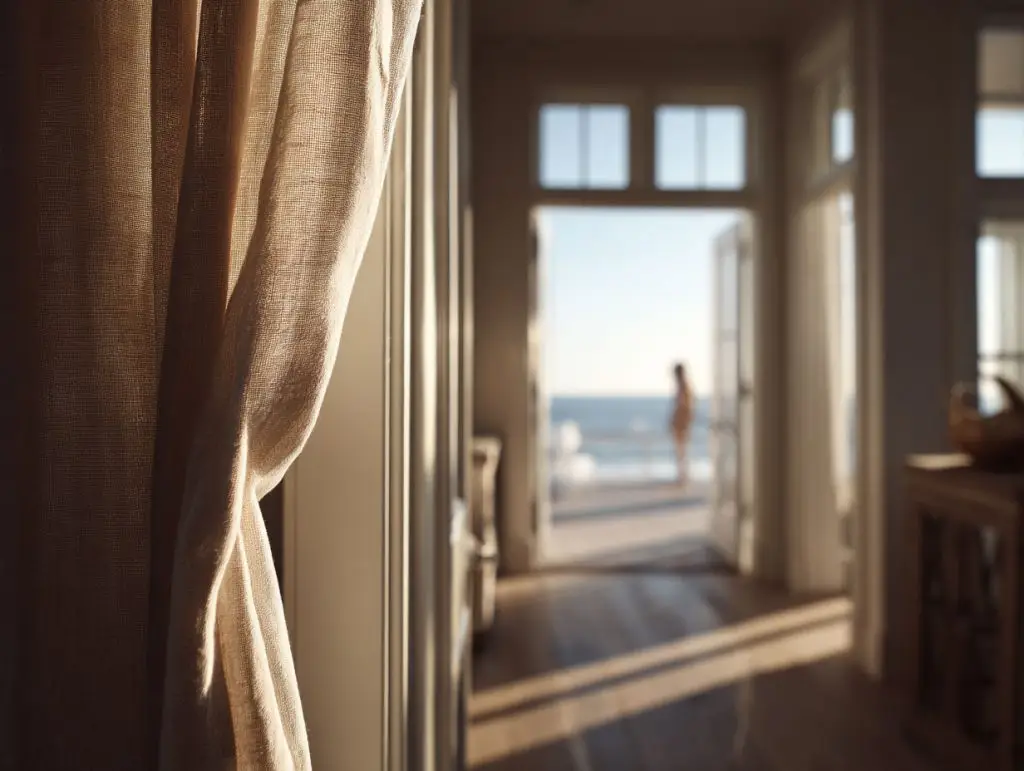
The Dust That Keeps Coming Back
1. The Battle I Thought I’d Already Won
I’ve lived in Destin long enough to accept that sand is part of daily life.
You sweep it up, vacuum it, and two hours later — it’s back, pretending it never left.
But there was something else, something finer than sand, that refused to disappear: dust.
No matter how often I cleaned, it always returned faster than in any other place I’d lived.
I changed cloths, upgraded my vacuum, even bought one of those fancy air purifiers that hum like they’re doing something heroic.
Still, by evening, the sunlight revealed a slow dance of fine particles in the air — unstoppable, quiet, constant.
That’s when I started asking the question most people in Destin eventually ask:
Where does all this dust come from?
2. When I Realized It Wasn’t “Just Dust”
I thought it was the usual — dead skin, lint, whatever settles in any home.
But one day, while helping a Sharky cleaning team on a job near the harbor, I saw the difference under light.
Coastal dust looked… heavier. Oily even.
It clung to surfaces differently, more stubbornly, especially near windows and vents.
That’s when they explained it: dust in coastal towns isn’t just from inside your home.
It’s a cocktail — salt particles, microscopic sand, humidity residue, pollen, and indoor fibers all fused together.
Basically, everything in the air that shouldn’t meet — meets here.
3. The Salt Connection
The ocean air is the real culprit.
Salt from the Gulf travels on the breeze, sticks to moisture, and sneaks in through vents, open doors, and even your clothes.
Once inside, it mixes with indoor dust and acts like glue — binding particles together so they settle faster and stick stronger.
So every time I wiped the shelves and saw that same thin gray layer the next day, it wasn’t laziness.
It was science.
4. The Unseen Effect
This kind of dust doesn’t just make your house look dull — it ages it.
It corrodes metal fixtures, dulls screens, and traps humidity against surfaces that should stay dry.
Even fabrics hold onto it, which explains why freshly washed clothes sometimes lose that crisp smell after a day.
It’s not neglect — it’s the coastal formula.
And the more I understood it, the more I realized my fight wasn’t against dirt — it was against chemistry.
5. The Moment of Acceptance
I stopped blaming myself for dusty tables and started respecting what I was up against.
Living by the water means constant exchange — air, salt, sun, and time.
And dust? It’s just part of that relationship.
What I Learned About Controlling Coastal Dust
1. Accepting the Rule: You’ll Never Win, But You Can Stay Ahead
At some point, I stopped trying to “defeat” dust and started trying to understand it.
That was Sharky’s first lesson: in coastal Destin, the air will always bring more. You can’t fight nature — you can only work with it.
The trick is keeping dust from settling where it doesn’t belong.
The goal isn’t perfection — it’s rhythm.
Clean often, but lightly. Control humidity. Keep air moving.
Because when the air moves, the dust doesn’t.
2. The Role of Humidity
Humidity is the invisible hand behind almost every cleaning problem here.
When it’s high, salt and dust particles cling together and stick to surfaces. When it’s too low, static makes them fly and settle again.
Sharky’s team taught me the magic number: around 50% humidity.
Below that, dust drifts. Above that, it glues itself down.
Now I keep a small hygrometer in the living room and run a dehumidifier when the air feels heavy.
It’s a simple trick that changed everything — fewer streaks, fewer sticky layers, less frustration.
3. Cleaning the Air Before the Furniture
The second rule: start with the air.
A good HEPA purifier catches what your duster never will — the fine, invisible salt that lives in the light.
But even without a machine, you can help your home breathe: open windows in the morning, cross-ventilate for 10–15 minutes, and clean vents every month.
Most of the “new dust” in your home is actually old dust being blown back at you.
4. The Right Tools, Not the Harsh Ones
I used to grab any cloth and spray I had, but Sharky’s pros showed me better:
- Microfiber only. It traps, doesn’t push.
- No static sprays. They attract particles in coastal air.
- Lightly damp, never soaked. Water binds with salt and leaves a film.
And always, always move top to bottom.
That’s not a slogan — it’s physics. What falls once shouldn’t fall twice.
5. The Hidden Helpers
Two things I never thought mattered ended up being game changers:
- Curtains. Light, washable fabrics act as natural filters. They trap what would otherwise float freely.
- Plants. Not for decoration — for dust. Broad-leaf species like peace lilies and rubber plants catch airborne salt before it hits furniture.
A little green turns out to be better than any chemical cleaner.
6. The New Normal
Now, I clean differently.
Once a week, a gentle pass with a microfiber wand on high spots, quick vacuum for the floors, filters rinsed, air refreshed.
No marathon sessions, no chasing perfection — just steady care.
The dust still returns, but softer, slower, less stubborn.
And when I see a fine layer forming again in the afternoon light, I smile instead of sighing.
Because that shimmer in the air isn’t failure — it’s Destin itself, drifting through my home.
Read also: How I Learned to Stop Cleaning for Guests


